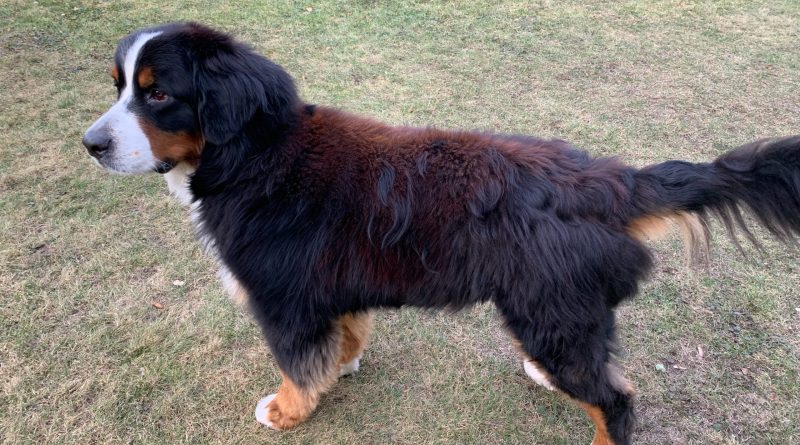Why did my pet’s black hair coat turn red?
What Determines the Color of Pet’s Hair Coat?
Cats and dogs produce a pigment called melanin (the same one humans have), which helps to determine the color in their hair and skin. There are two main types of melanin that the body can make: one is called ‘eumelanin,’ that results in a very dark black color and the other is called ‘pheomelanin,’ which has more of a reddish-brown color when produced by dogs and cats. For dogs and cats, the color of their hair coat is decided mostly by their genetics which result in variations in eumelanin and pheomelanin. However, in some cases, diet can also play a role.
Impact of Diet in Hair Coat Color
Two amino acids, called tyrosine and phenylalanine, are important in making melanin (as a reminder, amino acids are the building blocks of protein). Dogs and cats must meet their needs for essential amino acids through their diet. Tyrosine can be made from phenylalanine, so diets need to either include enough phenylalanine and tyrosine or enough phenylalanine to meet the needs for both of these important amino acids. If there is not enough phenylalanine or tyrosine in the body to make the darker black pigment, eumelanin, then the pet will make the reddish-brown pigment, pheomelanin, instead, which requires less of these amino acids. Though research studies have determined how much phenylalanine and tyrosine are needed for optimal growth and general health in cats and dogs, pets with mostly black hair coats may have even higher requirements in their diet to produce enough eumelanin to make a darker black coat. Most pet foods have phenylalanine/tyrosine levels that are high enough to meet these needs.
What Should I Do If My Pet’s Coat is Turning Red?
If your cat or dog has a black hair coat that starts to appear more red, especially after a change in diet, we recommend talking with your veterinarian to discuss whether diet may play a role for your pet. The first step may be gathering more information: you should tell your veterinarian everything you feed your pet. If you’re feeding a lot of treats or table food, or an unbalanced home-prepared diet, the overall diet could be deficient in amino acids and other key nutrients. Your veterinarian may call the pet food company to determine how much tyrosine and phenylalanine is in the diet, and how much your pet is getting based on how much of the diet they eat every day (this is also a great example of why pets who need to lose weight should have a specially formulated diet and not just reduce the amount of a maintenance food – you may be cutting back calories, but you may also be cutting back nutrients, too!). Your veterinarian may also recommend testing the amino acid levels in your pet’s blood. Based on all this information, your veterinarian may recommend a change in diet first to see if that changes their coat color back to a darker black. If your pet is on a special diet or sensitive to dietary changes, your veterinarian may also consider a trial of tyrosine and/or phenylalanine supplementation with a product that has independent quality control testing. If changing the diet or supplementation don’t seem to address their hair coat color, then your veterinarian may recommend other testing for possible medical conditions if diet is not the underlying reason. Most importantly, make sure you talk with your veterinarian about your pet’s diet to ensure it’s optimal for their lifestage, health, and individual needs. If your pet has many medical conditions that require unique dietary modifications, you might consider working with a Board Certified Veterinary Nutritionist.

